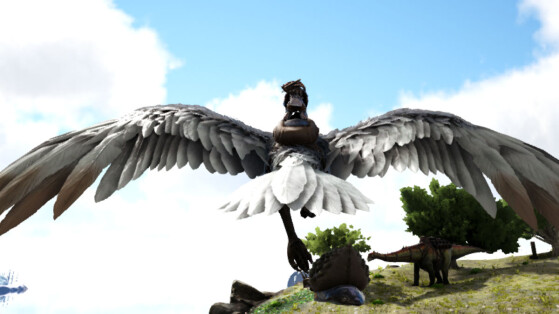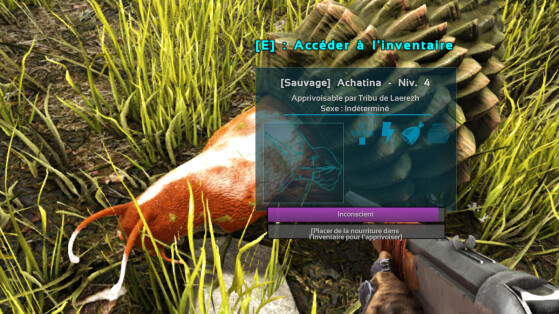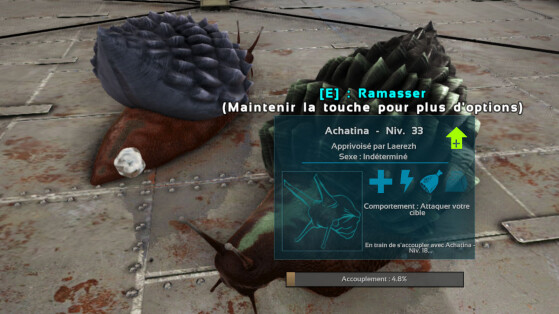In Ark: Survival Evolved, theAchatina is a large prehistoric snail. While he cannot act as a mount or fighter, he is one of the most useful creatures for creating a base, as the slime he secretes when he moves forms both cement and organic polymer. That’s why in this guide we explain the most important things you need to know about this dinosaur.
Table of Contents
Where can you find Achatinas in Ark?
I’Achatina is a fairly easy creature to flush out, as it is known from reliable sources to live in temperate and swampy mountainous regions. For example, on Lost Island we will often find it on the side of the island’s large central mountain, usually surrounding it rather than directly on top of it.
Its great slowness and harmlessnessAchatina a very docile and easily tamed creature. On the other hand, if you want to bring it back to your base, it’s better to provide a winged creature that can transport it, a Argentavis do the job perfectly without necessarily having to resort to one Quetzal. You can also carry it in your hands while riding another dinosaur, convenient to take it with you if you don’t already have another pet on your shoulder!
If you attack a Achatina, he will simply retreat into his shell until all danger is gone, at which point he will resume his little (and very slow) gastropod routine. Once in its shell, it clearly takes much less damage than when its head is out.
Peculiarities of the Achatina in Ark
- To book: When wearing organic polymer or damaged nodules, the Achatina triples the time before these resources expire, increasing it to 90 minutes (instead of 30). By carrying it in your hands while growing these resources, you can have a good supply of them!
- Resource Generator: If set to “Promenade”, theAchatina generates one unit of slime per minute which he stores in his inventory (up to a maximum of 100 units). In addition, he also passively generates one unit of organic polymer per minute in his inventory, re-stackable up to a maximum of 100 times.
- Known : It is possible, regarding the Dodo or the Sinomacrops, to theAchatina as an acquaintance. Since it is very big, it is in your hands that it will finish and you can help it move faster. It is also interesting to know that you can have it in your hands and ride on another dinosaur, useful for growing the aforementioned components! Finally, we can also Chitin helmet or a metal helmet on its head to make it more resistant to attack when it is not coiled up.
- Ammunition box: The last point that theAchatina interesting is the ability to go just about anywhere. In some caves where your other jumbo jets can’t necessarily enter, theAchatina will do the job perfectly and thus can carry a lot of ammunition while being very resistant.
Taming: how to tame the Achatina?
The very passive nature of theAchatina doesn’t necessarily make it very easy for a beginner to tame. Once you attack him, he will retreat into his shield, and you could then kill him before you manage to take him out. To avoid this, it is ideal to resort to small Tranquilizer dartsof the Darts Calmihealth improvedor even outright a Pulmonoscorpius because the damage dealt remains bearable for the little critter you covet and this will be Anesthesia driving too fast.
Once disabled, theAchatina tolerates only one and only one food: the Delicious vegetable cake. And this applies not only to taming, but also after it has been domesticated. Hard the beast!
How to breed the Achatina?
Just like the snails we encounter in real life, theAchatina is hermaphrodite. To be reproduced, you do not need to pay attention to the sex since two individuals Achatina can mate anyway, which greatly facilitates their reproduction.
Randomly and at a rate of about one clutch every 18 to 48 hours, the pairAchatinas gives birth to a baby Achatina about 8 hours after mating. For this to happen, place the pair in the same paddock and select in their options “Allow mating“.
For the little one to survive, you must watch him closely for 9 hours and give him food adapted to this species in his inventory, otherwise he will not be able to eat.



